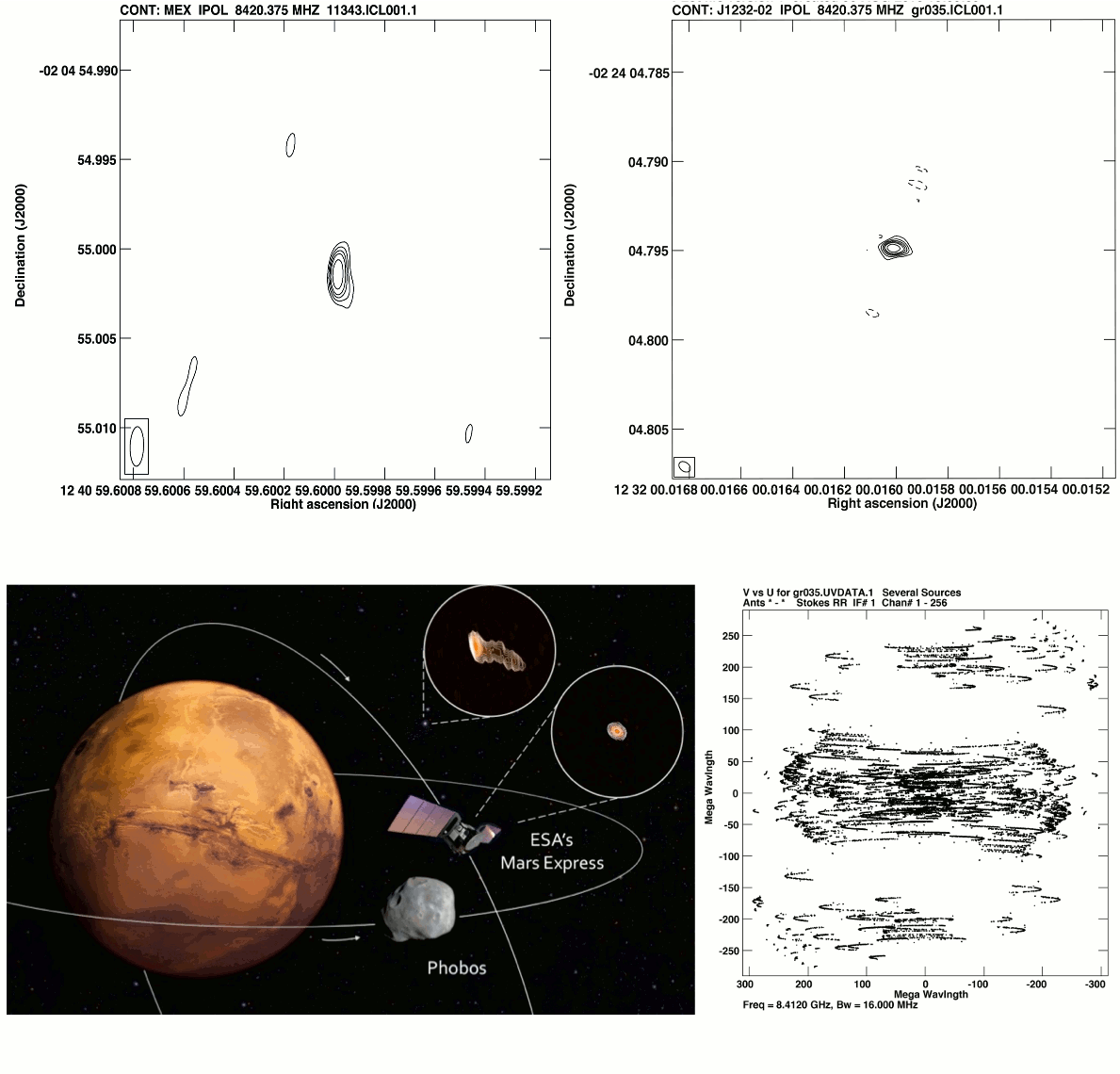 © ASTRON & UCT copyright
© ASTRON & UCT copyright
The present galaxy is NGC 7424, a ~10^10 Msun galaxy located ~13 Mpc away and observable from the southern hemisphere. It is a candidate of the upcoming MHONGOOSE (MeerKAT HI Observations of the Nearby Galactic Objects: Observing Southern Emitters) survey, a survey that intends to make use of the upcoming MeerKAT telescope in South Africa to study galaxy evolution. This galaxy, along with 29 other nearby galaxies, will be observed to low column densities. The galaxy was observed using the seven-dish Karoo Array Telescope (KAT-7) in South Africa. Because of its short baselines, KAT-7 is an ideal tool to observe low column density gas in galaxies.
The left panel of the figure shows the column density map of the galaxy overlaid on a DSS optical image. The resolution of the map is given in the lower left corner, along with the contour levels. The central part of the map shows a disturbed distribution of the gas in the inner region of the galaxy, consistent with previous observations with the australian compact array (ATCA). The gas extends out to more than twice the optical size of the galaxy. In the right panel, we show the velocity field of the galaxy. The top left side of the galaxy is the approaching end of the galaxy while the bottom right side is receding.
 © ASTRON
© ASTRON © JIVE
© JIVE © ASTRON / LOFAR
© ASTRON / LOFAR © Keith Bannister
© Keith Bannister © ICRAR/Curtin
© ICRAR/Curtin © ASTRON
© ASTRON © Minnie Mao,
© Minnie Mao, © Madroon Community Consultants (MCC)
© Madroon Community Consultants (MCC) © Swinburne
© Swinburne © JIVE and ESA (for Mars, Phobos and MEX images)
© JIVE and ESA (for Mars, Phobos and MEX images) © Cees Bassa, Kelley Hess, Marjan Tibbe, Vanessa Moss, Gemma Janssen
© Cees Bassa, Kelley Hess, Marjan Tibbe, Vanessa Moss, Gemma Janssen © ASTRON
© ASTRON © astron
© astron © Ewine van Dishoeck
© Ewine van Dishoeck © Niall Gaffney/TACC
© Niall Gaffney/TACC © NOVA Optical Infrared Instrumentation group at ASTRON
© NOVA Optical Infrared Instrumentation group at ASTRON © NOVA
© NOVA © Vikram Singh
© Vikram Singh © ASTRON
© ASTRON







